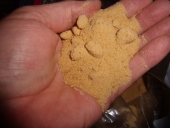
 1
1




 8
8





 6
6





 6
6





 6
6




For all your Montana Masonry Heater parts (also known as) Rocket Mass heater parts.
Visit me at
dragontechrmh.com Once you go brick you will never go back!
 1
1





 3
3





 1
1








Glenn Herbert wrote:My current 6 square foot evaporator.




Glenn Herbert wrote:Welcome to Permies, Mark! For your restaurant-pan sized evaporator, your idea would probably work fine. You would really want to build an enclosure that the pan(s) could sit in with heat flow space underneath them, so you don't just have one super hot spot and ambient air around the edges. You might be able to get enough heat flow with a J-tube, but I think you would find that an L-tube works better and is easier to keep fed. Building an L-tube with an 8" wide x 9" high x 31" long firebox and a 27" or 31" total height riser (from the firebox floor) is very easy, requiring no firebrick cutting or real masonry skills, just large Lego stacking. See my photos above. The enclosure which you would need to build anyway to stabilize the core and pans can be just about anything, even stacked concrete blocks. You would need about 40 standard firebricks, and if you use blocks for the support structure, about 30 standard 8" concrete blocks. I like to use Durock or similar cement board for the firebox floor - it won't last forever but is cheap and easily replaceable. If you use firebrick for the floor, add another 16 or so to the brick total. You would want to fill the space between enclosure and firebrick core with perlite, best if mixed with a small amount of miscellaneous powdered clay and moistened before filling. This will support the firebricks securely.
All this material will cost hundreds of dollars less than a Dragon Heater core alone.
Central Mississippi, Zone 8

 1
1





|
It used to be a lot bigger, but now it is a rather tiny ad:
Support permies and give beautiful gifts to gardeners: permaculture playing cards.
https://gardener-gift.com/
|



